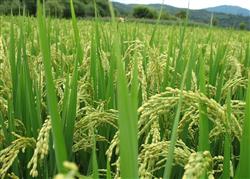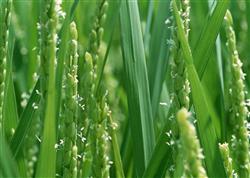Effect of different ratio of fertilization on yield of Rice

Nitrogen is an essential nutrient for plant growth. It is a component of every living cell, a component of chlorophyll, and a component of vitamins and energy systems in plants. The content of phosphorus in plants is second only to nitrogen and potassium, and is generally higher in seeds. Phosphorus participates in photosynthesis, respiration, energy storage and transfer, cell division, cell enlargement and other processes in plants, which can promote the formation and growth of early roots and improve the ability of plants to adapt to external environmental conditions. phosphorus can improve the quality of food crops. Potassium is not only the main nutrient element of plants, but also one of the three factors that affect crop yield because of insufficient supply in soil. Potassium can promote photosynthesis, and potassium can obviously improve the absorption and utilization of nitrogen in plants. Another characteristic of potassium is that it contributes to the stress resistance of crops. One of the important physiological functions of potassium is to enhance the regulation of cells to environmental conditions and improve the stress resistance of plants. The main results are as follows: 1. the experimental materials and methods were set up in the rice experimental field of Hongwei Farm Science and Technology Park in Heilongjiang Province in 2008. the soil type was meadow albino soil with soil organic matter content 48.9g/kg, alkali hydrolyzable nitrogen 172mg/kg, available phosphorus 31.3mg/kg, available potassium 87mg/kg, pH 6.39. The rice variety tested was Kongyu 131. In the experiment, three different fertilization ratios were set up without repetition by using the method of large area comparison. The experiment included three treatments: treatment 1 applied pure N150kg, P2O5150kg, K2O 150kg per hectare, treatment 2 applied pure N165kg, P2O560kg, K2O225kg per hectare, and treatment 3 applied pure N120kg, P2O5150kg and K2O180kg per hectare. 2. Experimental results and analysis (1) the investigation of growth period shows that in heading time, treatment 1 is July 26, treatment 2 is July 26, treatment 3 is July 25, and in maturity, treatment 1 is September 9. Treatment 2 is September 9, treatment 3 is September 8. The results showed that there was no difference in growth period between treatment 1 and treatment 2, only treatment 3 was one day earlier than treatment 1 and treatment 2 in each growth period. (2) the investigation of growth characters showed that the effective tillers of treatment 1, treatment 2 and treatment 3 were 30.1 plants / hole, 28.5 plants / hole and 31.3 plants / hole, respectively. Only a small amount of sheath rot occurred, and the incidence of each treatment was 18.6% for treatment 1, 15.4% for treatment 2 and 15.7% for treatment 3. There was little difference in plant height among all treatments, and the seed setting rate of treatment 2 was the lowest, which was 82.5%. Only treatment 3 showed lodging in the final mature stage. The results showed that the seed setting rate decreased with the decrease of the amount of phosphate fertilizer, and the disease incidence decreased gradually with the increase of the amount of potassium fertilizer. The amount of nitrogen fertilizer did not change much, so the result was not obvious. (3) the investigation of yield characters showed that in the yield results, the yield of treatment 1 was 9679.5kg/hm2, treatment 2 was 9088.5kg/hm2, and treatment 3 was 9865.5kg/hm2. According to the analysis of rice yield, the rice yield of treatment 1, treatment 2 and treatment 3 were 68.6%, 65.2% and 70.3%, respectively. 3. Summary: the amount of fertilizer applied in the paddy field for high-yield cultivation should be appropriate and the proportion should be reasonable, and the amount of fertilizer should be determined according to the fertility of different plots, combined with the results of soil tests and according to the conditions of soil fertility, reasonably supplement the lack of nutrients in the soil, accumulate nutrients to improve soil fertility, and achieve formula fertilization to ensure the high and stable yield of rice and improve the quality of rice. Combined with the experimental data, the best fertilizer application rate for high-yield paddy field was pure N120kg, P2O5150kg and K2O180kg per hectare, the yield was 9865.5kg/hm2, and the rice yield was 70.3%.
- Prev

Timely and early planting of rice is beneficial to increase yield.
As a matching method of manually transplanting rice seedlings, wet rice seedling raising technology is suitable for different regions, rice planting seasons and different types of rice varieties, and is widely used in our country. The technology has the advantages of convenient operation, wide application and strong adaptability, and the seedlings cultivated with good technology have good quality and high yield. 1. The seedling board is accurate.
- Next

Characteristics of Fertilizer requirement and fertilization techniques during Rice growth period
1. The characteristics of fertilizer requirement of rice nitrogen, phosphorus and potassium are the nutrient elements needed by rice but lacking in soil. Generally, for each 100kg production of rice, it is necessary to absorb nitrogen 1.6~1.9kg, phosphorus 0.8~1.3kg and potassium 1.8~3.8kg, and the ratio of nitrogen, phosphorus and potassium is about 1RV 0.5 1.8~3.8kg. Nitrogen is the most from turning green to tillering stage.
Related
- The first cup of black tea in spring, the flavor and history of tea gardens in Kenya, Africa
- The computer can not only choose potatoes, but also grow tea rice. AI will grow winter oolong tea champion.
- It is not only the inflated tea bitten by insects, but also engraved with the four seasons tea in Beipu.
- The Oriental Beauty Tea Festival in Zhuxian County takes the stage at the weekend to experience the plus-size feast of oil tea.
- & quot; Oriental Beauty Tea & Exploration of Emei in Hsinchu, the hometown of quot;
- The new variety of strawberry "Tainong 1" dessert is the first choice with mellow aroma. Crimson gorgeous
- History of Tea in Taiwan: from Wild Inner Mountain to Export Tea Garden
- Two types of Taiwan Oriental Beauty Black Tea won the British three-Star Award for Childhood Tea Xiang Zhang Jiaqi changed from pilot to champion tea maker.
- Banana species and varieties: the planting history of Taiwan Xianren banana and dwarf banana is long, is banana disease resistant?
- Coffee planting Technology: Qianjie Coffee from Seedling to harvesting

